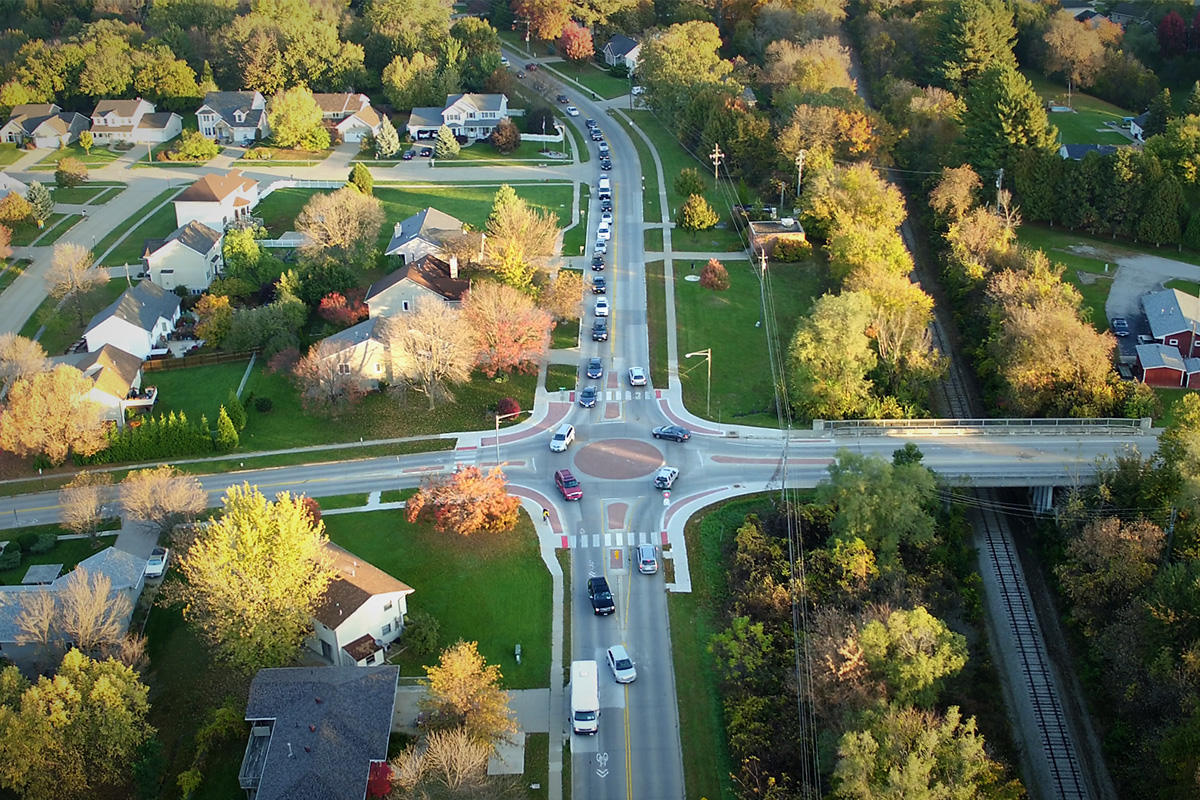Mini-Roundabouts: A Great Alternative for Stop Signs
Mini-roundabouts provide many of the same benefits as full sized roundabouts, including increased traffic flow and improved safety.
Mini-roundabouts provide many of the same benefits as full sized roundabouts, including increased traffic flow and improved safety.

Mini-roundabouts are not as small as they sound, but they still are not on the radar for many cities.
Literally just miniature versions of full-size roundabouts – the only difference being a smaller island in the middle that larger vehicles can drive over – they provide many of the same benefits, including increased traffic flow and improved safety.
So why aren’t they on the radar? Roundabouts in general are still controversial due to:
Mini-roundabouts, while similar, require a different thought process when designing. Full-size roundabouts are designed first with large truck traffic in mind; mini-roundabouts are designed to accommodate the other 95% of vehicles first.
Several reasons make mini-roundabouts a great alternative for cities to consider when redesigning an intersection:
Where do they work?
Mini-roundabouts work great in residential neighborhoods where there is less large truck traffic, less than 15,000 vehicles entering daily, and speeds less than 35 mph. They fit within the existing curblines, so there’s no sidewalk interference or need for right-of-way purchases.
Intersections that have high delays, but do not meet traffic signal warrants, would also benefit from a mini-roundabout’s ability to increase capacity and eliminate the traffic backup that happens with stop signs.
Paving the way
The City of Coralville is progressive in roundabouts and was the first in Iowa to build a mini-roundabout, completing construction in 2015. Marion will be the second city in Iowa, with design work complete and construction to be done this year.
Coralville selected the mini-roundabout in place of signalizing the intersection of 12th Avenue and Holiday Road. Previously there was a four-way stop, but traffic was backing up and the City needed to reduce congestion at the intersection. There wasn’t enough space for a full-size roundabout.
In researching Coralville’s options, a mini-roundabout was a great way to increase traffic flow while keeping the intersection safe for pedestrians. The University of Iowa’s Cambus drivers have had no trouble navigating the mini-roundabout with the ability to drive over the island curb.
The City of Marion, Iowa, had several safety concerns at the intersection of 29th Avenue and 35th Street. A two-way stop currently, vehicles are moving too fast for pedestrians to safely cross the street. Marion chose to install a mini-roundabout at the intersection this summer, since roundabouts in general are a great way to slow traffic while at the same time keep it moving, and the compact mini-roundabout was the right size for the residential neighborhood.
When considering options for an intersection, identify the current problems and see if a mini-roundabout is the solution that works. Just because it’s a new idea in Iowa, don’t let mini-roundabouts disappear from your radar.